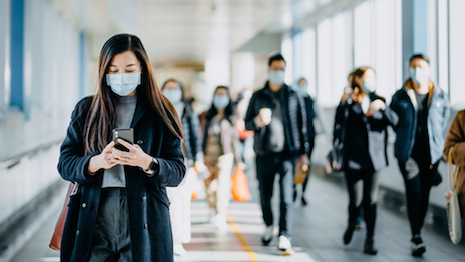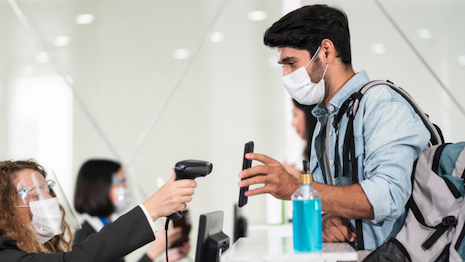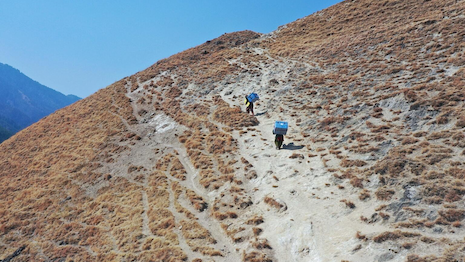 Globally, travel is experiencing an uneven recovery. Image credit: Euromonitor International
Globally, travel is experiencing an uneven recovery. Image credit: Euromonitor International
Although the travel and hospitality sector has shown signs of recovery, it will be several years before international trips and spending exceed 2019’s record levels.
According to Euromonitor’s new “Travel Rewired: Innovation Strategies for a Resilient Recovery” report, increased vaccination rates will likely accelerate a travel recovery next year, but the industry will not see an “overshoot” until 2024 at the earliest. Travel brands and tourists alike will also have to increasingly balance pent-up travel demand with concerns over climate change.
“With a more holistic view of the impact, better digital tools and critical thinking, there is huge opportunity to navigate the winding path to recovery, adaptation and resilience,” said Caroline Bremner, global head of travel research at Euromonitor International, in the report.
Long road ahead
Travel has been one of the hardest hit sectors during the COVID-19 pandemic, with international tourism falling by 75 percent in 2020.
The industry has begun recovering, with domestic travel spending reaching 69 percent of pre-pandemic levels in 2021 while international travel spending is forecast to achieve 37 percent of pre-pandemic levels.
Globally, however, the travel rebound is uneven because of several factors, including discrepancies in vaccine distribution, changing travel restrictions and incompatibility between countries’ various digital health systems.
 The E.U.’s vaccine certificate is only meant to be a temporary requirement. Image credit: European Commission
The E.U.’s vaccine certificate is only meant to be a temporary requirement. Image credit: European Commission
As a result, Euromonitor predicts global inbound travel spending will not reach or “overshoot” 2019’s peak levels – when worldwide spending surpassed $1.5 trillion – until 2024 at the earliest. If new COVID-19 variants continue to emerge and hamper the efficacy of vaccines, the recovery could drag into 2026.
Euromonitor includes lodging, transportation, car rental and activities or excursions as travel spending.
Like other sectors, COVID-19 has accelerated the adoption of digital in the hospitality business – a silver lining for the industry. Online travel sales will account for the majority of travel sales in 2021, having experienced five years of growth since the onset of the pandemic.
Surprisingly, travel brands have been divesting from mobile offerings even as this channel shows growth during the recovery. The share of travel companies that offered a mobile app or site declined from 41.3 percent in 2020 to 37.1 in 2021.
Technology is also essential for travel brands to reassure tourists about their health and safety. To varying degrees, consumers around the world are receptive to digital being leveraged for health apps, digital vaccine certificates, health and safety protocols, mobile payments and other offerings that can enhance the customer experience.
As the health crisis continues to evolve, inbound travelers are returning to different regions at varying paces.
Europe, the most mature regional travel destination, will likely have a slow and turbulent recovery. While regional travel has bolstered Europe, international travel spending is expected to take at least six years to return to pre-pandemic levels.
In the U.S., inbound travel spending is forecast to recover sooner, by 2024, although domestic travel spending is leading the market’s rebound.
Travelers remain cautious in much of Asia Pacific, although destinations including the Maldives and Thailand have been among the first to relax restrictions on tourism. In Japan, inbound tourism spending is predicted to increase by 56 percent in large part to the Tokyo Olympics (see story).
 Travel brands can hasten the recovery by supporting vaccination efforts, such as UNICEF’s COVID-19 Vaccines Appeal. Image credit: Burberry
Travel brands can hasten the recovery by supporting vaccination efforts, such as UNICEF’s COVID-19 Vaccines Appeal. Image credit: Burberry
The Middle East and Africa may be the last regions to see travel spending recover. A reliance on international travelers, as opposed to domestic tourists, will likely delay the recovery until after 2026 in markets including South Africa, Sub-Sahara Africa, Saudi Arabia and the United Arab Emirates.
Also complicating the travel recovery in the Middle East and Africa is greater dependence on air travel and vast vaccine discrepancies between countries.
Sustainability’s impact
Arguably, an overlooked aspect of the post-pandemic travel recovery is the role of sustainability.
The threat of climate change is becoming more apparent with each passing year, and consumers are expecting governments and brands to take a more proactive stance with environmental efforts. For instance, some countries are banning short-haul flights and city centers are restricting vehicles with traditional combustion engine to mitigate environmental impacts.
Per Euromonitor, 58 percent of travel businesses have or plan to implement a sustainability program in 2021, up from 2.1 percent in 2020. More than half are also incorporating sustainability features and initiatives in new product development launches.
According to a recent report from high-end hospitality network Virtuoso, 82 percent of Virtuoso travelers reported that COVID-19 had made them want to travel more responsibly in the future. While overtourism has hurt environments and local communities, the pandemic has shown the negative economic impacts of “undertourism” as well.
In an April 2021 survey, more than eight in 10 Virtuoso travelers want to travel more responsibly after the pandemic. The health crisis cost the global economy an estimated $4.7 trillion and 62 million jobs, per the World Travel & Tourism Council, after a record travel year in 2019 (see story).
More luxury travelers are also opting to incorporate environmentally positive practices into their itineraries, while others are reconsidering or rescheduling trips to areas facing climate disasters.
Wildfires, hurricanes, floods and droughts are among the disasters that have impacted destinations including California, the Caribbean and Europe. Shifts in weather patterns are also impacting microclimates, prolonging the length or intensifying different seasons (see story).